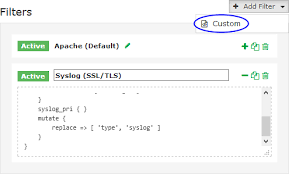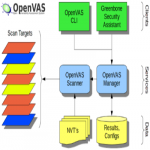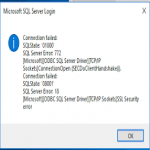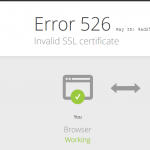Minikube is an Open Source all-in-one Kubernetes cluster which runs on your Linux system. It is under the CNCF umbrella. The cluster operates inside a virtual machine and includes the container runtime environment that containers could run inside the node.
This is the easiest way to provision a Kubernetes cluster for testing and developing on your local environment.
Here at Ibmi Media, as part of our Server Management Services, we regularly help our Customers to perform related Server Monitoring queries on Ubuntu Linux System.
In this context, we shall look into steps to install Minikube on your Ubuntu 20.04 machine.
How to Install Minikube on Ubuntu ?
To begin with this Installation procedure, make sure that you perform the following steps.
1. Update system APT
Always ensure that the system is up to date. So update the software packages list by running the following commands:
$ sudo apt update
$ sudo apt upgradeAlso install the below packages:
$ sudo apt install curl
$ sudo apt install apt-transport-https2. Install the VirtualBox for Minikube
In order to set up a single-node Kubernetes cluster with Minikube, you have to create a virtual machine on your Ubuntu machine. You can choose VirtualBox or KVM. In this guide, we use VirtualBox:
$ sudo apt install virtualbox virtualbox-ext-pack3. Install Minikube
Now, it's time to download the latest Minikube from the official repository:
$ wget https://storage.googleapis.com/minikube/releases/latest/minikube-linux-amd64This command will install minikube to the system and you have to grant the execute permission to it:
$ chmod +x minikube-linux-amd64Next, move the minikube file to /usr/local/bin directory:
$ sudo mv minikube-linux-amd64 /usr/local/bin/minikubeTo check the minikube version installed, execute the command:
$ minikube versionIn order to provision the All-In-One Kubernetes cluster, let’s start the minikube by running the following command:
$ minikube startHow to Manage the Kubernetes cluster ?
To interact with the Kubernetes cluster, you have to install the kubectl tool with the below command:
$ curl -LO https://storage.googleapis.com/kubernetes-release/release/`curl -s https://storage.googleapis.com/kubernetes-release/release/stable.txt`/bin/linux/amd64/kubectlTo grant permission, execute the command:
$ chmod +x kubectlThen, move the kubectl binary to /usr/local/bin:
$ sudo mv kubectl /usr/local/binNow, you can run some basic commands with kubectl to interact with your Kubernetes cluster.
See below:
To show the running node:
$ kubectl get nodeTo get the cluster information:
$ kubectl cluster-info[Need help in Setting up Software Packages on Ubuntu Linux System ? We can help you. ]
Conclusion
This article covers how to install Minikube on your Ubuntu 20.04 machine. Minikube is an open source tool that allows you to set up a single-node Kubernetes cluster on your local machine. The cluster is run inside a virtual machine and includes Docker, allowing you to run containers inside the node.
Now, you can use the single-node Kubernetes with minikube to learn one of the most famous containers orchestration tools in the Cloud Native era.
To enable and access kubernetes dashboard , run the command:
$ minikube dashboardThis will open the Kubernetes dashboard in the web browser.
To stop the minikube, run:
$ minikube stopTo delete the minikube, run:
$ minikube deleteTo Start the minikube, run:
$ minikube start
This article covers how to install Minikube on your Ubuntu 20.04 machine. Minikube is an open source tool that allows you to set up a single-node Kubernetes cluster on your local machine. The cluster is run inside a virtual machine and includes Docker, allowing you to run containers inside the node.
Now, you can use the single-node Kubernetes with minikube to learn one of the most famous containers orchestration tools in the Cloud Native era.
To enable and access kubernetes dashboard , run the command:
$ minikube dashboardThis will open the Kubernetes dashboard in the web browser.
To stop the minikube, run:
$ minikube stopTo delete the minikube, run:
$ minikube deleteTo Start the minikube, run:
$ minikube start












